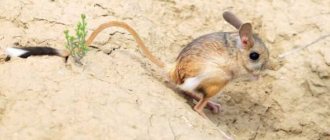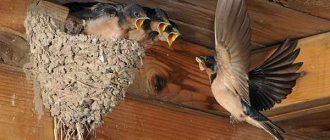History of Welsh Terriers
The pedigree of the breed goes back to the 17th century, when wire-haired black and tan terriers roamed the fields of English Wales. Initially, the cocky, loud-voiced dogs were bred by farmers who needed compact animals that combined the “qualifications” of guards and rat catchers, but at the same time were content with a ladle of liquid stew. Subsequently, several new breed lines sprang from Welsh dogs, including the Welsh family.
Over time, the line of the Old English Black and Tan Terrier died out, giving way to more tenacious and agile descendants. Perhaps that is why, from the middle of the 19th century, increased attention began to be paid to “pumping up” the external and working qualities of Welsh Terriers - by 1886, the breed already had its own standard, and pages in stud books, and a club of admirers. The descendants of Welsh rat catchers came to Russia after the Great Patriotic War, but did not arouse any professional interest among dog breeders. As a result, the shaggy “emigrants” lived ordinary, unremarkable lives as pets, leaving no purebred offspring behind.
The real breeding of Welsh Terriers in the USSR began in the 70s, when breeding animals were brought to the country from abroad. At that time, the domestic stock came from foreign sires Glaya-Erik, Axel, Glory-Mercy and Yudita-Yozho, so the breeders soon faced a shortage of fresh genes - all the animals bred by Soviet breeders were closely related to each other. Fortunately, already in the 80s the problem was solved by importing pedigree Welsh Terriers from Sweden, Germany and Finland, which significantly improved the external performance of Russian breed lines.
Breed standard
When you first meet a Welshman, you really want to write him down as a relative of the Airedale Terrier - the same shaggy rectangular face, the same coarse hair on the body and the same hunting bearing. In fact, the only common ancestor between the breeds is the Old English Black and Tan Terrier. At the same time, representatives of both families have never been crossed with each other, not to mention the working specializations, which are completely different between the Welsh and the Airedale. In particular, the Welsh Terrier has always been “sharpened” for burrow hunting, while its competitor from Yorkshire more often practiced catching river otters.
Head
Welsh Terriers have a flattened, moderately wide skull, a harmoniously developed but not excessively long muzzle and a distinctly smooth stop.
Teeth and jaws
Strong, strong teeth meet in a scissor bite. The massive, well-defined jaws have good depth.
Nose
The lobe is neat, painted in a uniform black tone.
Eyes
Welsh Terriers are characterized by small almond-shaped eyes without obvious bulge and roundness.
Ears
The Welsh have elegant, high-set ears: medium-sized, regular V-shaped, tightly fitting to the temples.
Neck
The Welsh Terrier's neck has a slight graceful curve and flows smoothly into the shoulders. The neck muscles are developed, but not excessively.
Frame
The Welsh Terrier is a compact dog. The animal's back is short, with a strong loin; The chest is moderately wide and deep.
Limbs
Welsh dogs have strong, even legs with low-set hocks, providing the animal with a free, energetic reach and linear movement. The dog's shoulder blades are long, strongly laid back; the pasterns are powerful and straight, and the elbows move freely along the body. The hind legs look massive due to the muscular elongated thighs, while the paws have a miniature cat shape.
Tail
Historically, Welsh dogs, like all terriers working in burrows, had their tails docked. Today this procedure is prohibited by European associations, therefore modern representatives of the breed have high-set tails of normal length, carried vertically (the so-called funny tail is considered a defect). If the tail is docked, which is still common in Russia, its tip should not be higher than the occipital protuberance of the pet.
Wool
The slightly disheveled "clothes" of the Welsh Terrier consist of undercoat and wiry, coarse hair. At the same time, the layer of wool is very dense, not lagging behind the animal’s body.
Color
The Welsh Terrier can be black and tan or must have a “coat” of black grizzly and tan color. At the same time, black markings on the toes are prohibited, and black coloring below the dog’s hocks is also not desirable.
Defects and disqualifying defects in appearance
Disadvantages of the exterior include excessively large dimensions (height above 39 cm at the withers), hare-like paws, anatomical deviations from the standard (long/sloping croup, belly, weak withers, etc.). The ban on exhibiting in the ring applies to Welsh Terriers with cryptorchidism, depigmented lobes, lips and eyelids, atypical colors and coat structure, as well as cowardly and overly aggressive dogs.
Description of the breed
Currently, there are two types of breed:
- worker - wider forehead, rougher coat, stronger dog;
- exhibition.
The description of the breed is similar to the Airedale Terrier, only miniature. The physique is muscular, athletic and at the same time compact, with a long neck, large head and flat skull. The back is short. The tail is most often docked at 1/3. The paws are strong and rounded. The front legs are straight, the hind legs are slightly curved. The fifth toes are usually removed. The muzzle is medium, rectangular, the fur forms a mustache and beard. The skull is flat. The jaws are powerful (because of this the grip is strong). The ears are set high, hanging, triangular. The eyes are dark and deep.
There are similar breeds to the Welsh Terrier. So many people cannot understand who is in front of them: an Airedale Terrier or a Welsh Terrier. The Welsh Terrier and the Airedale Terrier have differences. The first breed is smaller in size than the second; the Welsh Terrier has a wider and longer head, and longer hair. The Lakeland Terrier and the Welsh Terrier have differences in color: the Lakeland has a wider range of colors.
Coat type and colors
The Welsh Terrier's coat is hard and lies close to the body. The dog practically does not shed. Trimming the fur causes it to become softer. The soft one does not look as neat as the hard one, the animal looks like a toy. By five months, puppy fluff comes out and needs to be combed out. From this time, the growth of guard hair begins. If the puppy has coarse hair, it looks like a smooth-haired one. Later it becomes thicker.
The color is usually two or three colors: red, black or gray. Puppies are black and tan at birth, by 4 months the head and chest become red, and by 2 years the color changes. The standard allows for white spots on the chest. It is desirable that it be black and tan, without white spots on the fingers.
Dimensions of the Welsh Terrier: height at the withers up to 40 cm, weight up to 9.5 kg. The Welsh Terrier is a mini Airedale Terrier.
Character
Characteristics of the breed: the dog is active, proactive (makes decisions on its own, without prompting from the owner). Loves to swim. If you don't watch her, she will run after other animals. Loves long walks and active running. “Helps” in the garden and at the dacha - he digs holes or beds, choosing the most ripe vegetables. In general, the dog follows its owner everywhere. The Welsh Terrier is distinguished by its courage. Can show aggression towards other dogs and is strong in battle. To develop peaceful qualities, a puppy needs early socialization.
Welsh Terriers should get used to other pets from an early age. Otherwise, hunting instincts will make themselves felt, and the rest of the pets will have a hard time. They do not accept other animals on their territory. They love to participate in fights and noisy brawls. Therefore, behavior correction is needed. They get along well with children. Curious, smart and playful. They consider children their friends. They are sociable and cooperate with all family members.
The Welsh Terrier always needs the attention and approval of the owner. If the dog receives this, it will begin to follow all the owner’s commands and trust him. The dog is very loyal. Prolonged loneliness can cause depression. Balanced and easy-going character (males, as a rule, are calmer). May be stubborn. Sometimes there are unbalanced dogs that need obedience training for a long time.
Suitable for men who love to hunt. Hunting with a Welsh Terrier will be fun for both of you. The dog can entertain or lie down for a long time and protect. He will not be able to sit on a leash for a long time - he will start whining.
Choosing who is better at hunting:
- Welsh Terrier or Jagd Terrier, it is worth remembering that the Welsh Terrier will not go ahead, it takes the animal in its place;
- Welsh Terrier or Miniature Schnauzer - the first is a hunter, the second is a working dog.
When choosing a Welsh Terrier or a Fox Terrier, you should take into account that the Fox Terrier is a typical choleric, the Welsh Terrier is calm.
Temperament of the Welsh Terrier
Welsh is perhaps one of the most “terrier” representatives of his own group. Infinitely expressive, passionate, and in relation to other animals also incredibly cocky, this comrade strives to be on time always and everywhere. When acquiring a breed for home keeping, you should not give in to its hunting past: Welsh Terriers do not rush at children and do not show aggression towards adults. The only thing you will have to get used to is the willfulness of the agile nimble. A true Welsh Terrier has his own vision of any everyday situation and his own system of judgment, so it can be difficult to convince him.
The breed cannot imagine life without close contact with the owner. To be more precise, Welsh dogs are generally ready not to part with their owner for days: a terrier resting its head on a person’s slipper or leg and falling asleep in this position is a completely common picture. By the way, if you dream of a pet that can “mimic” the color of the wallpaper, you are definitely not in the right place with Welsh terriers, because you can always see and hear them in the apartment. It’s also difficult to hide anything from Welshies, so when you acquire a representative of this family, prepare to be “under the guard” of your pet every minute.
The Welsh Terrier does not get along with other dogs: this is a fact that needs to be accepted. In addition, he is the greatest provocateur, knowing how to arouse hostile interest on the part of shepherd dogs, wolfhounds and other large-sized tribesmen, famous for their ferocity. However, the dog does no better with small representatives of the fauna - cats, hamsters and rats, when they see a Welsh dog, run away at jet speed. The Welsh Terrier loves to have tough showdowns with creatures even slightly smaller than him.
A modern purebred Welsh Terrier is almost always a gambling addict. Don’t think that you have completed your mission by taking your dog outside and making him run after a ball. Upon returning home, the shaggy “meteor” will continue to demand a new portion of entertainment. He does this not impudently, but in the manner characteristic of terriers, that is, every minute he lies in wait for the owner who is distracted from business and reminds him of his own existence. Toys scattered around the house are another cunning way to catch a person in your net. As soon as you kick a squeaker that has turned up under your foot, the Welshman will regard the sound made by the toy as a signal to action, and then he will not be able to get away from the game.
Characteristics of the Welsh Terrier breed
The Welsh Terrier is a popular breed in the UK. Despite his small stature, he is a real hunter. The dog is used to catch small burrowing animals and birds. When hunting, she is passionate, fearless, and aggressive towards animals. But with a person, he is a gentle, obedient dog, kind and flexible. He is capable of becoming a devoted companion, the best friend for an active owner.
This dog can be used as a guard and bodyguard. The Welsh Terrier does not show aggression towards humans, but thanks to its sensitive sense of smell, it detects a stranger from afar, barking to warn about him. This dog is fearless and always strives to protect its owner and his family members. These qualities make it possible to use Welsh Terriers in the police and at customs to search for dangerous substances. And thanks to their people-oriented nature and kindness, they often work in rescue services.
| Options | Characteristic |
| Name | welsh terrier, welsh terrier, welsh terrier, welsh |
| a country | Great Britain |
| group of breeds according to the ICF classification | terriers |
| application | hunter, companion |
| life expectancy | 11-14 years old |
| height | 34-40 cm |
| weight | 9-10 kg |
| aggression | No |
| activity | very high |
| training | complex |
| care | almost does not shed, needs trimming |
pros
The Welsh Terrier is a small dog, so it is easy to keep in a city apartment. If you walk him enough and provide him with physical exercise, he behaves calmly at home and does not cause problems. This is an ideal companion for active owners, for athletes, tourists, one of the best family dogs. The Welsh Terrier has many advantages that make it popular:
- energetic, cheerful, playful;
- sociable, senses the owner’s mood;
- friendly, does not show aggression towards people;
- loves children, gets along well and is patient with them;
- hardy, efficient;
- will rid the house and area of rodents;
- unpretentious, does not require complex care, wool does not cause allergies;
- has good health and long life expectancy.
Minuses
This breed is not suitable for calm people, homebodies or inexperienced dog owners. The Welshman's strong hunting instincts and high activity level can become a problem. This is not a lap dog, but a bully dog that can be dangerous to small animals. There are also some disadvantages to keeping this dog:
- loves to dig;
- prone to escape;
- needs long active walks;
- cannot stand loneliness;
- It is difficult to train, as she is often distracted and can be stubborn.
The video complements the characteristics of the breed:
Video: Welsh Terrier - all about the dog breed | Dog breed - Welsh Terrier
Video: All about the Welsh Terrier breed. Hunter in a black tailcoat.
Education and training
The Internet is full of funny videos, the heroes of which are terriers, turning on coffee makers, brushing dust from furniture with a broom and polishing the owner's shoes to a shine. However, it is important to understand that behind such shows there are months, even years of hard work. In ordinary life, Welsh dogs, like all representatives of the terrier group, are not eager to learn and do not tolerate being forced to acquire knowledge. Therefore, the only way to interest a dog in training is to put it in a playful form. The main thing is that the four-legged scoundrel does not see through the trick and does not guess that serious work lies behind the supposed entertainment. Positive incentives can also work wonders. Welsh Terriers are greedy for praise and are easily tempted by treats.
When raising a puppy, it is necessary to adhere to moderate firmness. From the first days of being in the house, the baby must understand the system of prohibitions and then strictly follow it. At first, the Welsh Terrier will try to defend its own rights. For example, he will whine resentfully when he cannot lie on the bed, or he will begin to hypnotize with his gaze every piece that a person puts into his mouth. It is important not to be fooled by provocations and not to meet the dog’s weaknesses. Any permissive action for an animal is identical to a small victory that is worth securing. As a result: today you fished a piece of meat out of your own plate for the Welshman, and tomorrow your pet will jump onto your lap to take the treat from the table on its own.
Train your puppy to come when asked in a timely manner. By three to four months, the Welsh Terrier should respond to the owner’s call, and the animal can be controlled either with the standard command “Come to me!” or simply by pronouncing the nickname. However, you should not abuse trust, so if an animal has done something wrong, calling it for punishment is a grave mistake. Welsh is not a stupid creature and will quickly figure out what awaits him in such cases, so next time he will either skillfully feign deafness or hide from punishment.
If the Welsh Terrier begins to make attempts to dominate, they must be stopped sharply, but kindly. For example, if the dog decides to grumble in response to demands or after the command “Sit!” jumps off abruptly, you can shake it thoroughly or press it to the floor with your hand.
Important! Do not follow fashion trends and do not train your Welshie using an electric collar. This is a very painful accessory for the animal, which in the future can harm the already sensitive neck of the Welsh Terrier.
To toilet train your Welshman, take him for walks more often. Puppies do not know how and cannot endure for long, so it is important to have time to take the baby out before he has time to make a puddle (immediately after sleeping or eating). If your ward did not make it to the walk and left waste products on the floor, do not scold or spank him. The puppy will decide that going to the toilet in your presence is the height of bad manners and next time he will relieve himself in a secluded corner of the apartment. In general, as Welsh Terriers age, they quickly realize that it is more convenient to satisfy their toilet needs outside and look forward to their next walk.
It is better to do ring training for your pet in secluded places where there are no dogs or other people. This will make it easier for the Welsh Terrier to concentrate on commands. Usually training begins with running (commands “Lynx!”, “Work!”). If the animal moves incorrectly and goes into a gallop, it should be pulled back (command “No!”). From straight-line movements you can move on to running in a circle, which is a more complex action. Commands “Ring!”, “Inspection!”, “Teeth!” are introduced after the Welsh Terrier has learned to move at the correct trot.
Price
It will not be easy to buy a dog of this breed in the CIS countries. The fact is that this breed is not very in demand and popular here, so you will need to look for a puppy. There are only a few Welsh Terrier kennels that breed and sell real, purebred dogs.
These dogs have good pedigree, pure blood, English roots, the necessary documents and all vaccinations. Also, pets there are trained in all commands, toilet trained and other manners.
The price of a Welsh Terrier depends on its age. On average, you will need to pay from 12,000 to 30,000 rubles for a puppy. It will be cheaper to buy a dog second hand, but there is no guarantee that the dog is purebred and such cases of sale happen very rarely.
For a healthy, trained friend you will need to pay three to four times more. But, it is recommended to buy a puppy in order to teach him everything yourself, so that he gets used to all family members and becomes a full part of it.
Hunting with a Welsh Terrier
In Russian realities, you can successfully fight a fox with a Welsh dog. The breed is distinguished by good viciousness and fiercely attacks the animal in a hole. However, it is better not to count on lightning success, since seasoned foxes can lead a dog by the nose for a long time, winding through underground tunnels. It usually takes Welsh Terriers several hours to wear down a red rogue and drive it out at gunpoint. The process is especially delayed if the hole is old and branched.
The situation is even more complicated with badger holes, which are sometimes occupied by fox families. It can be difficult for a Welsh dog to navigate this semblance of the Parisian catacombs and often, after being active for several hours, the dog loses interest in the enemy. That is why, when buying a puppy for hunting purposes, it is important to ask the seller how high the degree of viscosity is in the baby’s parents. This quality, like malice towards the animal, is inherited and even an experienced professional cannot easily cultivate it.
In Europe and America, classic hunting is not favored, preferring to replace it with bloodless entertainment. For example, in the USA, Welsh Terriers are used in the sport of barn hunting. The essence of the attraction is to imitate hunting actions using a labyrinth built from straw bales, in which cages with rats are placed. A Welsh Terrier released into a hole must find rodents in the shortest possible time and inform the owner about this.
At the moment, barn hunting is recognized as an official sport by several canine associations. In addition, it does not establish class boundaries for participants (both show pets and pet-class Welsh dogs can compete). In Russia, such “quests” are not yet common, although some pioneers have already built straw labyrinths on their plots, where they successfully train Welsh Terriers and their relatives.
Maintenance and care
The Welsh Terrier puppy is a little energizer with an insatiable passion for mischief and destruction, so before moving the baby to a new home, make sure to buy space limiters. These can include dog cages, indoor enclosures and other structures that do not allow the animal to escape beyond the designated area. Of course, the pet should not spend days in this kind of cell, but when leaving home even for a short period of time, it is wiser to protect the Welsh Terrier from itself by limiting its area of movement.
It is better to use old textiles as bedding in the cage, rather than newspapers, which Welshies can chew for fun. On hot summer days, Welsh terriers are not averse to cooling off in a pond, so if there is none nearby, you can arrange an artificial pool for your dog right in the yard by filling a flat, shallow container with water.
Make sure to purchase the correct collar and leash and take your Welshie out into busy streets where other dogs meet, in full walking gear. Remember that Welsh Terriers react very violently to even minor provocation from their four-legged pets. When keeping a dog in the yard of a private house, be responsible when choosing a fence. The Welsh Terrier is extremely jumpy, not to mention the fact that this comrade manages to dig under a fence in a matter of minutes.
Advantages and disadvantages of the breed
| pros | Minuses |
| The dog is brave and active | Hunting instincts can break out, the puppy can catch up with cats and small rodents |
| Compact and small size allows you to keep your dog in an apartment | Long walks with active games are not suitable for calm people |
| There is no allergy to wool | Often distracted during training |
Where to buy and price
The price of a puppy depends on purebred, documents and other factors. The minimum cost is 120 dollars, on average from 10,000 to 20,000 rubles. It is better to buy a baby in nurseries: Siversky, Vegus, Everest and others. New owners will be warned about the peculiarities of feeding and caring for the breed, and will be given all the necessary documents.
Nicknames must correspond to the breed. Jack, Dick, Bonnie, etc. are suitable for males. A female Welsh Terrier will respond to Judy, Elsa, Vesta, and others.
When properly trained, the Welsh Terrier is a professional dog. He is an excellent companion, hunter, and is used to save people's lives and also to search for narcotic substances. The dog is not aggressive, you can trust the child with it, it will be able to protect it.
Hygiene
Conditioned shedding is something that happens to Welsh Terriers twice a year. The breed does not shed its fur completely, so in order for the coat to be renewed, the owner will have to engage in trimming (plucking the fur) or entrust the process to an experienced groomer. The first trimmings begin in puppyhood: at three to four months of age, it is time to teach the Welshman to calmly endure an unpleasant procedure for him. If you plan to apply the shine yourself, buy grooming tools: knives with fine, medium and coarse notches, mucrackers and other auxiliary items, including brushes and tangle cutters.
Before pinching the Welsh Terrier, it is necessary to comb it along the growth of the coat and against it, simultaneously sorting out tangles, if any. In addition, you will have to prepare for the fact that you won’t get a stunning result right away. Keep in mind that a truly spectacular awn grows after several trimmings. At the same time, at first Welsh terriers have to show off almost naked, since during the first plucking of the fur they have to remove all the dead hair down to the undercoat, which exposes the skin. Another problem that may arise in puppies and young animals is the hair on the neck and chest that does not want to shed. It is not recommended to be zealous and try to tear out the fur in such cases. Just comb these areas of the body daily and wait for the hair to begin to die off on its own.
For novice fans of the breed, when they first pinch, it is better to be guided by grooming diagrams, which are easy to find on the Internet. They clearly illustrate how to properly grip the hair and in what sequence to trim parts of the dog’s body. For example, the legs of a Welsh dog are almost never plucked down to the undercoat before an exhibition, since the limbs of show dogs must look like columns, otherwise the score in the ring will be reduced.
Important! Show dogs are plucked a couple of months before entering the ring, and this requires special, more thorough trimming. If you are not yet able to properly “cultivate” the Welshman, it is better to entrust the show plucking to a groomer, after carefully studying his portfolio.
Caring for the ears, eyes and mouth of a Welsh Terrier is not difficult, but it is necessary. The most important thing is timely examination of the hearing and vision organs, as well as their hygiene. Wax from the ear funnel is removed with a clean cloth soaked in hydrogen peroxide, chlorhexidine or miramistin. Dust lumps from the eyes can be removed with a clean napkin in the morning, and once a week it is useful to wipe the mucous membrane of the eyelid with cold tea or chamomile infusion. About once every three days you will have to arm yourself with a toothbrush and toothpaste for dogs to treat your pet’s mouth. The process is not complicated, given that veterinary pastes do not foam and there is no need to rinse the Welshman’s mouth with water afterwards.
Welsh Terrier dog care
You need to carefully monitor the cleanliness of your eyes and promptly check them for dirt and dust. They are cleaned with a cotton swab to remove all dirt.
This breed requires regular teeth cleaning. You can buy a special paste or do it with baking soda. Otherwise, plaque may appear, which will then turn into tartar.
- If you participate in exhibitions with your dog, then trimming should be monthly. If not, then you can do it less often, but it is worth accustoming your pet to the procedure from puppyhood.
- Comb the fur with a steel comb. It helps remove old hair. The massage is done with a wire bristle brush. It massages the skin and promotes better hair growth.
- Wash your dog about once or twice a week. Due to its coarse coat, the Welsh Terrier can get dirty quickly. But if you carry out all the procedures on time, the dog will hardly shed.
This is not a dog for a chain, so it is not worth leaving it in this position for a long time. You need to give her regular exercise. A puppy can easily run off after interesting things and get lost, so walks should only be done on a leash.
Feeding
Typically, mixed and dry types of feeding dogs are preferred by breeders who regularly attend international exhibitions - while on the move, feeding a pet with natural dishes becomes troublesome. Breeders of working lines, on the contrary, prefer animal proteins, cereals and fresh vegetables to industrial “drying”.
The traditional menu for an adult Welsh Terrier consists of lean meat, tripe and offal, which are added to buckwheat and rice porridge cooked in broth. Ocean fish fillets also add pleasant variety to the diet, as do fermented milk products, but such delicacies should not appear in a dog’s bowl every day.
Pumpkin and carrots seasoned with unrefined vegetable oil are used as vitamin supplements. Welsh terriers love salads like these if they are accustomed to them from an early age. Some individuals prefer heat-treated vegetables or sauerkraut - this is normal and acceptable. The main thing is not to try to replace animal protein with plant fiber.
Laminaria, fucus, and fish oil, which have no contraindications and are well tolerated by the dog’s digestion, can be an equivalent replacement for industrial mineral complexes. Homemade rye crackers or dried fruits are perfect as treats to reward an animal for success in learning and training. The main thing is that the latter are not from a store, where such products contain lethal doses of dyes, sugar and preservatives.
How to choose a puppy
- Choose active, inquisitive puppies of medium size. Too small or large Welsh dogs are not the most enviable product.
- If you are looking for an animal with show and breeding potential, give preference to matured animals, since even a psychic cannot predict the show career of a two-month-old puppy.
- Pay attention to the degree of fatness of the litter. Welsh Terriers should not be thin or overfed.
- Find out what diplomas the producers of the offspring have. As a rule, parents with developed working (hunting) qualities have children with similar talents.
- There should be no white spots on the Welsh Terrier's coat. If the seller offers a Welsh dog with a white mark or mark on the chest, assuring that for animals of the pet category there is nothing wrong with this, do not give in to persuasion and refuse the purchase.
- Find out what vaccinations the puppies have received and what they eat. Responsible breeders feed their animals natural or super-premium dry food. If, while walking around the kennel, you come across a bag of Pedigree, do not expect to buy a healthy Welsh Terrier here.
How to buy a Welsh Terrier puppy
You need to buy a puppy from a nursery; this is a guarantee that the dog will be purebred and without hereditary diseases. The breeder must provide all documents: pedigrees of the parents, certificates from exhibitions, puppy cards, veterinary certificates. Welsh Terrier puppies are sold at the age of 2-3 months. The price of a show class dog in Moscow starts from 30 thousand rubles. A puppy with disabilities can be bought for 10-20 thousand rubles.
It is advisable to choose an active, well-fed, but not very large baby. It should have a rectangular head, hard black coat without white spots. The eyes are clear, clear, the nose is moist and cool, the limbs are straight.
The photo shows what the puppies look like:
The video complements the description of the breed:
Video: Welsh Terrier. Breed characteristics, care
Video: Welsh Terrier through the eyes of a breeder
The Welsh Terrier is a hunting dog. She is sociable, cheerful and good-natured, so she can become an excellent companion for a hunter, athlete or tourist. But it is not recommended to have this breed for those people who are rarely at home or lead a sedentary lifestyle. Without attention and sufficient exercise, the Welsh Terrier can become nervous and uncontrollable. But with the right approach, he is a devoted friend, cheerful, playful and affectionate.
Welsh Terrier price
Welsh Terriers are not as common in Russia as we would like, so you will have to spend time searching for a puppy of the right class. The cheapest offers on the market are representatives of working lines, which can be purchased for a modest 7,000-10,000 rubles. Usually these are puppies from producers who have achieved certain success in hunting, but are unremarkable in terms of exterior appearance. If you need a future star of exhibitions and dog shows, pay attention to registered nurseries like Siversky, which have been working with the breed for decades. For a baby with a decent pedigree and promising appearance in such places they ask from 25,000 rubles.
Diseases
The breed is not susceptible to serious diseases. There are problems with the joints, and skin disease may occur due to an unbalanced diet.
Eye disease may develop, but this is all individual and does not apply to the entire breed as a whole.











